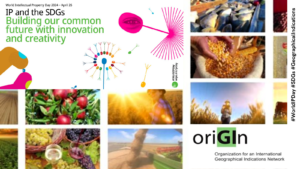
To answer these questions, the book first set up the legal frameworks in France and Vietnam before exploring the impact of the law on the creation process, the operation and the effects of 12 GI initiatives established under the trade mark and the sui generis systems in both countries where I undertook extensive fieldwork, including:
- France: Marseille soap (trademark since 2012); Wood from the Alps (trademark since 2013); Green lentils from Berry (PGI since 1998); Bouchot mussels from Mont-St-Michel Bay (PDO since 2011); and Pélardon cheese (PDO since 2001).
- Vietnam: Sticky rice from Đông Triều (trademark since 2013); H’mong beef from Cao Bằng (trademark since 2011); Pottery from Đông Triều (trademark since 2012); Vermicelli from Bình Liêu (trademark since 2013); Star anise from Lạng Sơn (sui generis GI since 2007); Fried calamari from Hạ Long (sui generis GI since 2013); and Conical hat from Huế (sui generis GI since 2010).
The main findings of the book are:
- To appreciate the differences between the trade mark and the sui generis approaches, close attention should be paid to the institutional context. In French and European law, the two legal approaches are totally independent from one another and significantly different from each By contrast, in Vietnam, there is no clear-cut distinction between the sui generis and trade mark systems and both regimes show strong similarities.
- In countries like France where the two systems of protection are clearly distinct, the sui generis scheme may generate more economic benefits than the trade mark system. This is mainly because there is great commercial interest in GI labels among mass retailers, wholesalers and distributors to meet the demand of consumers for origin-labelled products. From that perspective, sui generis protection matters to producers as it allows them to access the regional and national market, sell off substantial volumes of their production, and be guaranteed payments within a short period of time.
- Outside the market, positive and negative impacts are found on job creation, preservation of cultural practices and biodiversity conservation across GI initiatives established under both schemes in both countries. While the effects of GIs outside the market are largely mediated by the rules governing the product, other factors contribute to explaining the non-economic effects of GIs, such as the stakeholders’ social, cultural and environmental awareness which may lead to the voluntary adoption of informal rules and codes of conduct. Market success also emerges as a particularly important issue affecting producers’ interest in participating in GI initiatives and driving or hindering job creation.
- GI initiatives contribute to promoting collaboration among producers and other local stakeholders, which further contributes to generating spillover effects outside the market such as the structuring of the value chain and the development of the technical skills and know-how of local stakeholders through the exchange of good practices.
- The book also documents compelling stories that show little or non-use of GI labels across both sui generis and trademark initiatives in each country. ‘Dormant’ GIs are typically found when local producers have no space to participate meaningfully in the initiatives or find no reason to use GI labels. How does GI law affect the actions of local actors and shape the processes for their involvement in the GI initiatives? In short: immensely, depending on whether the approach to GIs at the institutional level is bottom-up or top-down. Other important factors impacting negatively on the producers’ ability and interest in using the origin labels include modernization of ways of life, changes in consumer tastes, prohibitive selling prices, lack of economic incentives and long marketing channels.
These are some findings of this research. This book tells twelve stories which can hopefully contribute to advancing our understanding of GIs. More fieldwork is certainly needed to come to grips with the empirical richness of GIs and develop empirically-grounded theory and sustainable practices that will make GIs really work for the benefit of local producers.


